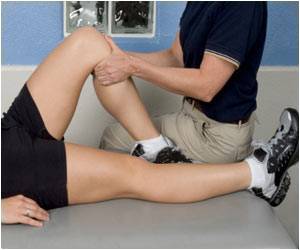
Researchers at Mayo Clinic in Rochester, MN, imaged the knees of 27 patients using dual energy CT -- 16 of the patients had confirmed ACL tears, while 11 had no history of trauma, said Dr. Katrina Glazebook, a lead author of the study.
The images were reviewed by a musculoskeletal subspecialty trained radiologist and one senior level radiology resident. The subspecialty trained radiologist was 94% accurate in identifying the ACL tears on dual energy CT; the resident had an 87% accuracy rate, said Dr. Glazebrook.
"While this is a new use for dual energy CT, the images were of sufficient spatial resolution and diagnostic quality that radiologists with various levels of expertise in musculoskeletal imaging could accurately identify the tears," said Dr. Glazebrook.
Dual energy CT can also be used to assess bone bruise or contusion within the bone marrow, added Dr. Glazebrook.
"While MRI is considered the gold standard for evaluation of internal derangement of the knee, MRI is rarely used in the emergency department because it requires a longer scan time (30-40 minutes in which the patient has to keep his or knee in what can be an uncomfortable position) as compared to CT (few seconds). MRI is usually not readily available and it can be more costly than CT," added Dr. Glazebrook. "Using dual energy CT to identify significant internal derangement of the knee early can facilitate treatment planning for patients with knee trauma," she said.
Advertisement
Source-Eurekalert











